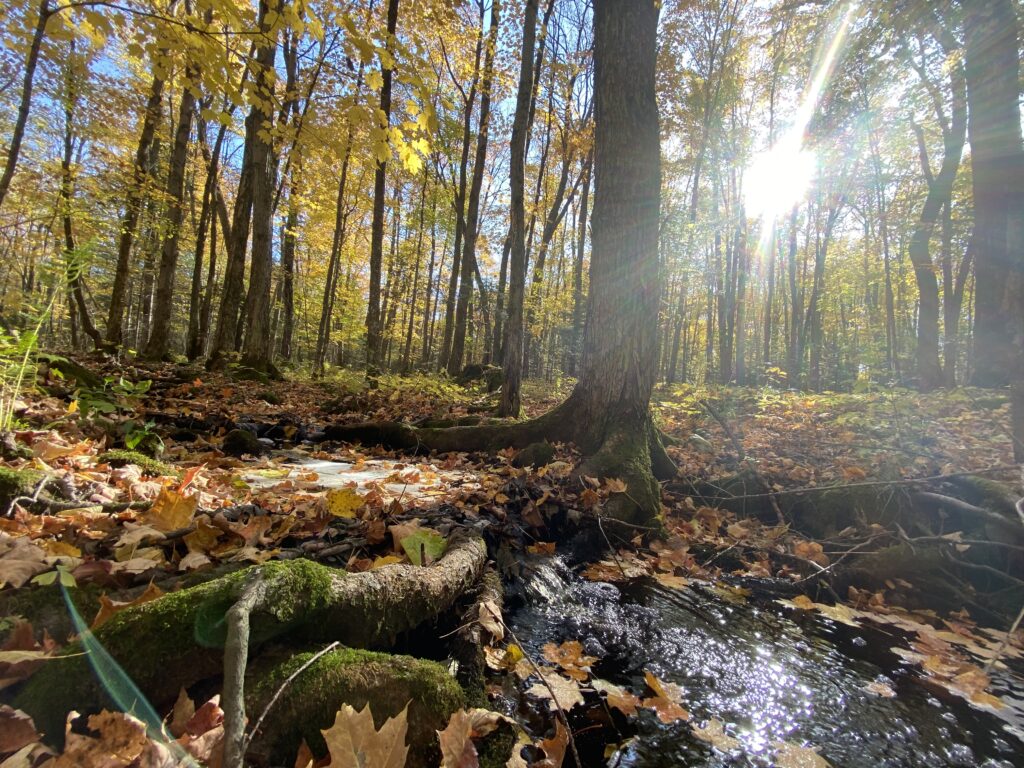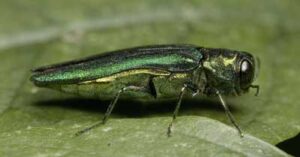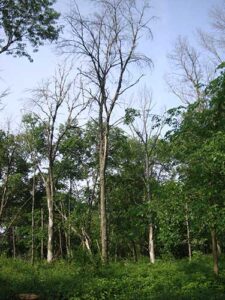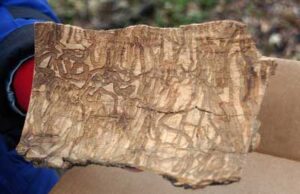
Getting to Know Your Forest Health Team: Brenna DeNamur
By Denise Thornton
Incursions of insects and plants that are harmful to healthy, natural woodland balance, such as Emerald Ash Borer and Jumping Worms, can make managing your forest challenging, but in Wisconsin, we have access to a great resource –- a team of DNR Forest Health specialists who are located around the state and poised to help.
“What we do is detection, monitoring, and mapping of issues of concern,” says Brenna DeNamur, the Forest Health Team outreach coordinator. “We identify causes of damage and offer education and outreach. The forest health specialists are constantly fielding emails with questions from the public. They are on the ground, and they know what’s popping up in their areas.”

The State Forestry Board first implemented a program for survey and control of harmful forest insects in 1949. The program has been growing to meet the needs of state residents ever since. It now includes technicians and a forest pathologist whose lab work helps identify samples of pathogens from all over Wisconsin. The state is divided into six regions, with six forest health specialists assigned throughout the state. One is on military leave.
“The team works with the public to address invasive species or tree mortality impacting forests in their areas,” says DeNamur. To find the specialist serving your area, check out this link to the Forest Health Staff Page.
To keep up with the latest efforts to control harmful plants and insects, it’s a good idea to check out Forest Health News, an online update.
“The Forest Health team works to control many invasive plants and insects, but ‘invasive’ does not always mean ‘non-native’. There are some native species that are damaging our forests,” says DeNamur, “and not all non-native species are harmful. It’s important to make that distinction.”

The three biggest issues that the Forest Health Team is prioritizing are Emerald Ash Borer, Oak Wilt, and Spongy Moth. As a side note, readers will notice that the pest formerly known as the gypsy moth is now called the spongy moth. The DNR is also working with the Entomological Society of America to promote this name change. The previous name was removed due to its use as a derogatory term for the Romani people. The new name, spongy moth, is derived from the common name used for the moth in France and French-speaking Canada, “spongieuse” and refers to the moth’s sponge-like egg masses.
“The DNR has a lot of outreach materials,” DeNamur says, “including fact sheets, brochures and cards like baseball cards to help identify and respond to problem plants and insects.” Check out a complete list of Forest Health publications.
Make sure to be on the lookout for upcoming articles featuring the Forest Health Specialist staff and their specialty areas!

